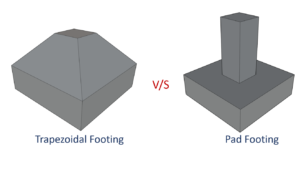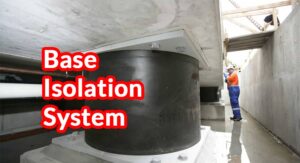
Measurement of Air Content in Concrete

What is the Air Content in Concrete?
The amount of air in a certain piece of concrete is called its “air content,” and it is usually shown as a percentage. The main reason for putting air into concrete is to make it last longer when it freezes and thaws with water present. Air-entraining admixtures in concrete make tiny, stable, and consistent air bubbles in the cement matrix that range in size from 0.01mm to 1mm. The bubbles turn into air spaces in the hardened concrete, allowing water to expand when it freezes without hurting the concrete.
Methods of Measurement of Air Content in Concrete:
1. Pressure Methods for Air Content:
There are two ways to measure the amount of air, both of which follow the standard ASTM test method for measuring air pressure. With the help of the Type A meter, it is easier to measure the change in the volume of concrete. For this, a vertical column of water is poured over a certain height of the concrete. A calibrated sight tube can measure the loss of volume caused by pressure. The steps of the Type A method are simple to understand. When the barometric pressure goes above 183 meters, the elevation has to be recalculated, which is inconvenient. It’s the same as a 2% change in the air pressure at sea level, which is another way to look at it.

The Type B air meter uses a known amount of air at a higher pressure. The amount of concrete in the container will stay the same size. The amount of air in concrete is directly linked to how much the pressure in the high-pressure chamber drops. Different from a type A air meter, this one can be reset only sometimes.
On the other hand, the valves limit how much water can leak out. Since it is up to the operator to fix the leaks and the different readings on the dials, they must always have the right tools. One of the many problems with not knowing something is coming to conclusions based on little information. The concrete sample needs to be completely packed into a bowl for pressure measurement. It happens because there are small pockets of air.
2. Volumetric Methods for Air Content:
The primary objective of this method is to take a precise reading of the volume of air present in a sample of freshly mixed concrete. Testing for air content in concrete begins with crushing a sample into a container of known volume. In this method, a container with a built-in graduated cover is filled with water, isopropyl alcohol, or both liquids and then sealed. Air bubbles in the specimen are then removed by vigorously shaking the entire setup. How much air can a system are determined by comparing the fluid levels before and after agitation? This method is hard and takes a long time.

3. Gravimetric Method for Air Content:
Water can fill the void left by the crumbled concrete, and the top of the air gauge can seal the gap. The meter’s reading is reset to zero using the built-in hand pump (or as calibrated). Release the air pressure from the top and see how much is lost on the gauge. The total correction factor is subtracted from the dial reading to reach the final solution. With a maximum aggregate size of 34 inches, concrete’s typical amount of air is around 6%, and the typical ranges for air content are between -112% and 112% of the target value.
It’s the first method of its kind, and its simplicity and lack of prerequisite equipment make it a promising candidate for quantifying air content in concrete. The bulk of this procedure entails using time-tested methods to calculate the density of freshly compacted concrete. The theoretical density of thick concrete is then determined by using the mix proportions and specific gravities of the constituent constituents to compare with this density.
Conclusion:
An air content test is usually needed to check air-entrained concrete in areas where frost damage can happen. When air-entraining admixtures are added to the concrete mixture, the air bubbles are uniform and stable. These holes allow water to expand when it freezes without hurting the hardened concrete.




